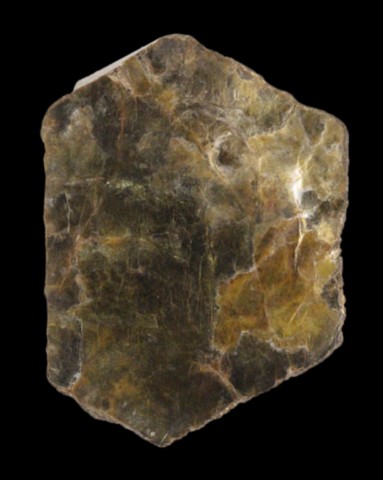VERMICULITE
Class : Silicates
Subclass : Phyllosilicates
Crystal system : Monoclinic
Chemistry : (Mg,Fe,Al)3(Si,Al)4O10(OH)2 4H2O
Rarity : Common
Vermiculite is a phyllosilicate structurally close to talc and smectites but which contains numerous interlayer cations as well as water. It is a common mineral, generally formed during the meteoric or hydrothermal alteration of biotite or phlogopite, mainly in the context of ultrabasic rocks. It is also found in the aureole of contact metamorphism affecting basic and ultrabasic rocks, carbonatites or metamorphic limestones; it is also an important clayey constituent of soils. Vermiculite has the particularity of swelling and exfoliating considerably when heated (nearly 20 times its volume at 950°C) in the form of vermicelli, a property widely used in industry for the manufacture of lightweight concrete. Its name comes from the Latin vermiculus (small worm), in allusion to this exfoliation of the mineral which twists like a worm when heated. Vermiculite forms crystals with pseudohexagonal outlines which can reach large dimensions. It is reminiscent of an altered biotite but with lamellae which are not very elastic. Its color is variable : generally creamy brown to bronze yellow, sometimes greenish or dark green. It is the swelling clay par excellence, it is used for its insulating properties both thermal and acoustic in many industries.
Main photo : Vermiculite from Brinton's Quarry, Pennsylvania, USA © Howard Heitner
Vermiculite in the World
Twinning
No known twinning for this mineral species.
Fakes and treatments
No fakes listed for this mineral species.
Hardness : 1.5 to 2
Density : 2
Fracture : Undetermined
Streak : White to green
TP : Translucent
RI : 1.525 to 1.581
Birefringence : 0.020
Optical character : Biaxial -
Pleochroism : None
Fluorescence : None
Solubility : -
Magnetism : NoneRadioactivity : None


